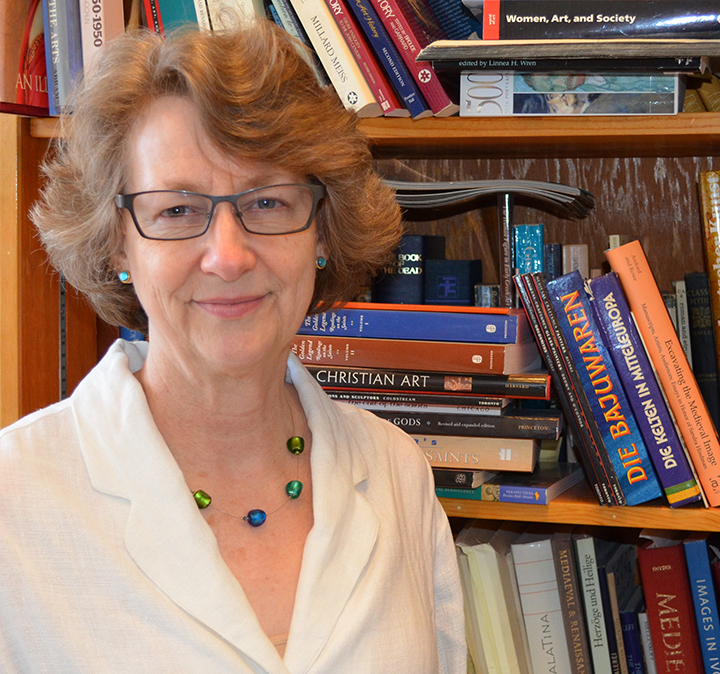
Alison Stewart, professor of art history, has received a Fulbright Senior Lecturing/Research award to teach and complete research at the University of Trier in Germany from April to July 2014.
“I’m delighted. It’s a wonderful opportunity,” Stewart said.
Stewart will be conducting research for her book she is writing on the 16th century painter-printmaker Sebald Beham. The project is a continuation of Stewart's 2008 book "Before Bruegel." It will be the first full-length Beham book written in English.
As part of the Fulbright, Stewart will also teach a seminar, "The Art of Sebald Beham and Contemporaries: New Subjects in early Modern Nuremberg and Frankfurt.” Birgit Münch, an assistant professor of art history at the University of Trier, will assist Stewart with the seminar.
Beham (1500-1550) was a painter-printmaker who lived in Germany during the first half of the 16th century at the time of the Peasants’ War and Lutheran Reformation. He appears to have been trained by the leading master Albrecht Dürer around 1515-1520.
“Whether Beham learned directly from Dürer in his workshop or solely from Dürer’s prints is unclear because documentation linking the two is lacking,” Stewart said.
Beham, along with his brother Barthel and artist Jörg Pencz, were banished from Nuremberg in 1525 as “godless painters,” accused of heresy and blasphemy. They were part of a group of German printmakers known as the “Little Masters,” for their specialization in very small, finely detailed prints.
Beham moved to Frankfurt around 1531. During his two decades in Frankfurt he designed woodcut prints for Nuremberg publishers, book illustrations for Frankfurt book publishers, and made small engravings.
“Until recently Beham was viewed as both a less talented Dürer follower-imitator and as a godless, radical artist — the ‘bad boy’ of the German Renaissance,” Stewart said.
That began to change in 1980 in an exhibition, catalog and symposium organized by Stephen Goddard and other scholarship and research that have expanded the understanding of Beham.
“Acknowledging Beham’s contributions and his 16th century acclaim are research goals of mine,” Stewart said. “My contribution to Beham studies includes putting Beham back into art historical discussions through published articles and books, in English, and through making those publications available through the UNL Digital Commons site. I am gradually uncovering the creative printmaker and entrepreneur praised in his later years, one who invented and popularized peasant festival images and who designed and printed more than 1,000 prints with a wide variety of subjects in different techniques.”
Tentatively titled “Sebald Beham and Frankfurt,” her current book project will address various aspects of Beham’s print production not studied before.
“A Fulbright semester in Germany will allow me to do the research for the chapter on Frankfurt and to test the hypothesis that Beham had both connections in Frankfurt and a reputation for creativity and innovative approaches beyond Nuremberg that facilitated his move,” Stewart said.
Stewart has taught art history at the University of Nebraska–Lincoln since 1989. She received her Bachelor of Arts in art history and journalism from Syracuse University, her Master of Arts in art history from Queens College of the City University of New York, and her Ph.D. in art history from Columbia University. In 1981 as a graduate student, she received a Fulbright grant to study in Munich.
Her recent books include “Media Revolution: Early Prints from the Sheldon Museum of Art,” edited by Stewart and Gregory Nosan in 2012, which is available through the Digital Commons at http://digitalcommons.unl.edu/zeabook/9/; “Before Bruegel: Sebald Beham and the Origin of Peasant Festival” in 2008; and “Saints, Sinners and Sisters: Gender and Visual Art in Medieval and Early Modern Northern Europe,” co-edited with Jane Carroll, in 2003.
— Kathe Andersen, Fine and Performing Arts